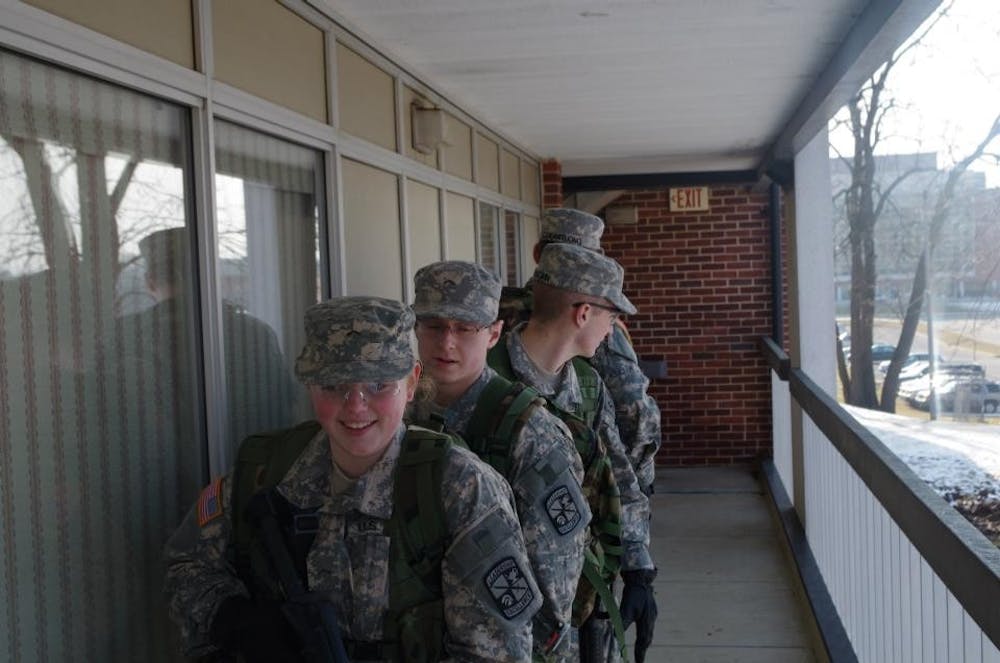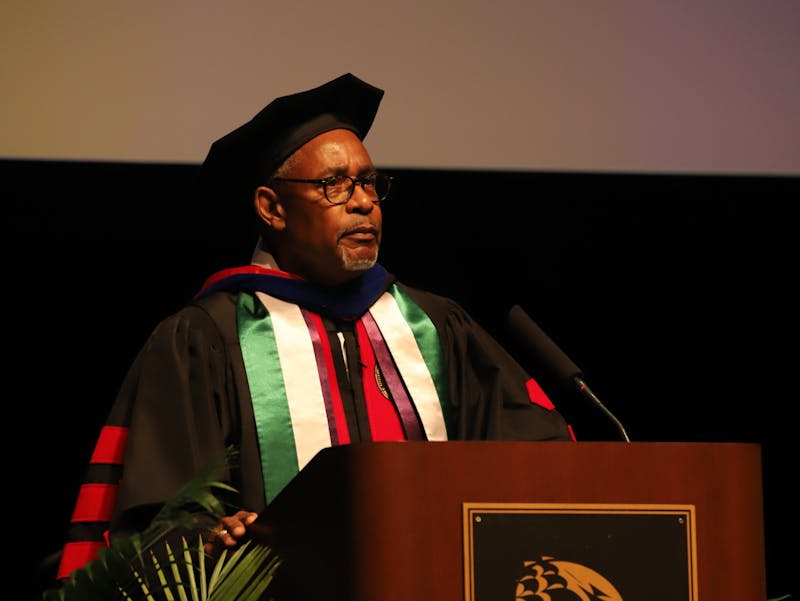The “old” Seavers apartments may be vacant and slated to be torn down, but they still have some life left in them.
Thursday afternoon, the Shippensburg University Reserve Officer Training Corps (ROTC) members used the apartments for their lab on close–quarter battle drills.
For the civilian, this entails kicking open doors, clearing rooms for enemy threats, communicating at the four-person team level and reacting to unexpected situations with speed and good sense.
The Raiders are practicing for their leadership development and assessment course called Warrior Forge that the junior MS-IIIs will take this summer.
The labs will help them do well at camp where they will be ranked and graded to determine their national rank among other cadets.
“Having a training experience like this will make us more comfortable and competent when we go to our leadership development and assessment course in the summer,” junior MS-III cadet Ian Lloyd said.
Along with the close quarter combat drill this week, the cadets are also practicing with communications, first aid, leadership and physical fitness to get ready for Warrior Forge.
“It’s a unique opportunity that we had today,” sophomore cadet and public affairs officer Jared Wendling said.
“We were able to get as good of a training environment here on campus as anywhere we could have gone,” Wendling said.
The lab was conducted through the mud and debris of the Seavers Apartments and was considered a success.
ROTC is among a group of organizations using the Seavers Apartments as training or practice for real–life scenarios.
Along with Army ROTC, the SU Police Department and the Pennsylvania State Police have used the buildings for training purposes.
Although the building is going to be torn down in just a matter of weeks, it has given many opportunities for a variety of real world unique training opportunities since its final occupants moved out in December.
There is a new Seavers Residence Hall on campus now, but the old building is still standing, a testament to the memories it has held since its construction in 1976.



The Slate welcomes thoughtful discussion on all of our stories, but please keep comments civil and on-topic. Read our full guidelines here.